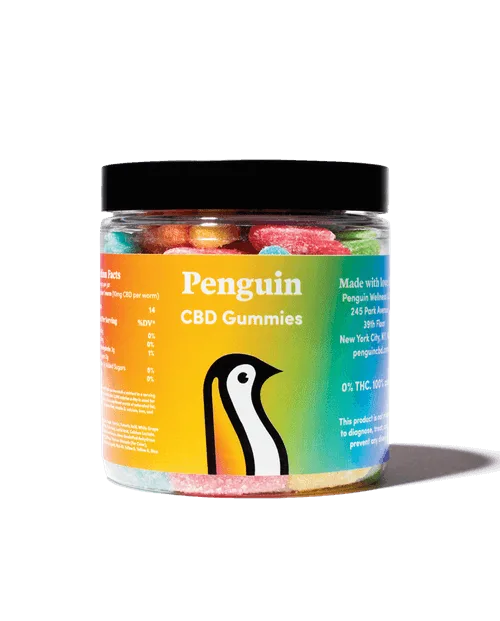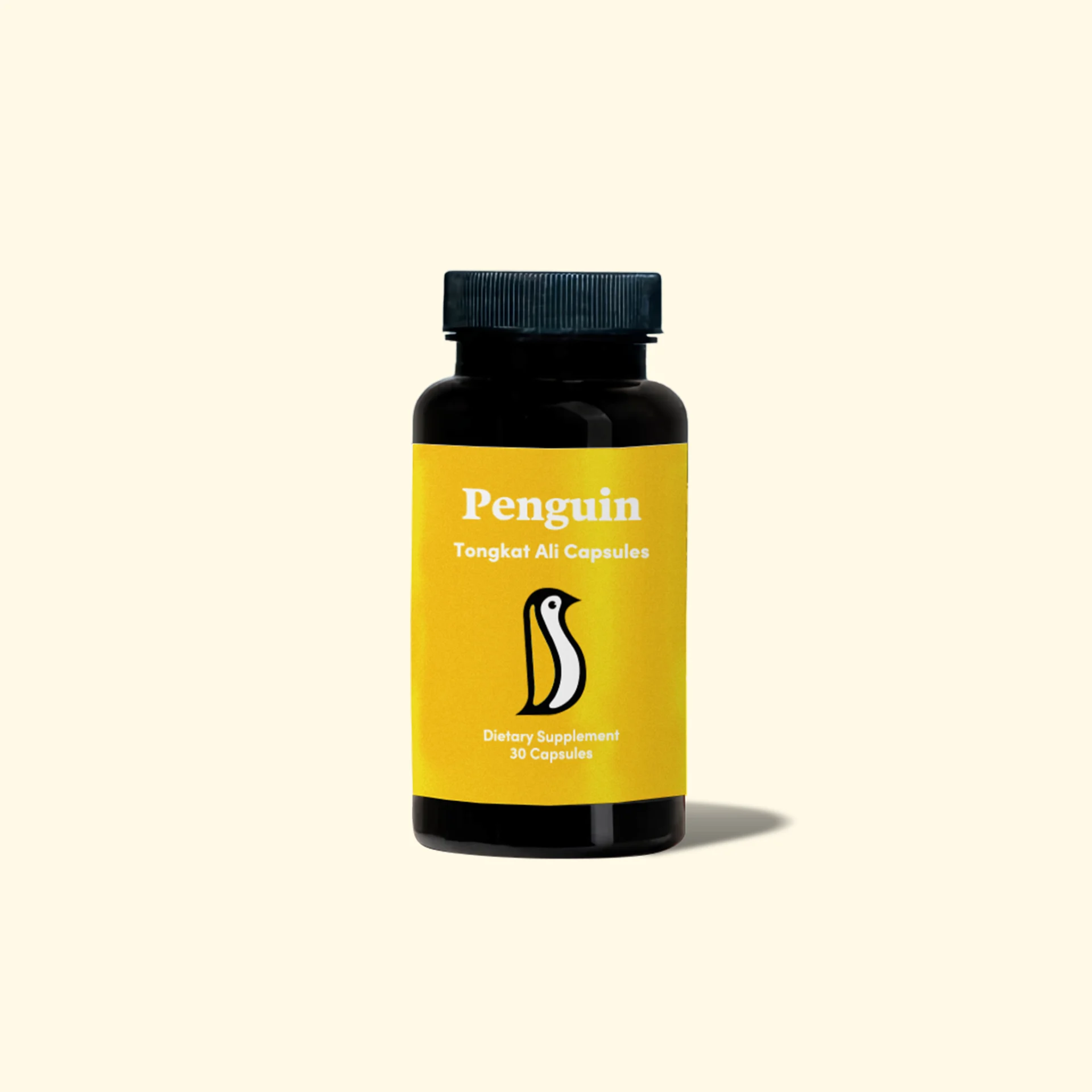What Is the Entourage Effect?
 By Penguin CBD
By Penguin CBDYou might have seen many CBD products proclaim their ability to create an "entourage effect" with their formulas. Before we dive into what exactly that means, we need to talk about the practice of herbalism.
Traditionally, herbalists would use the entire plant or part of the plant (like the roots or the leaves) for medicines. They might take the root for one purpose, the leaves for another and the flowers for yet another. Dandelion root, for example, was used as a liver and digestive tonic, while the dandelion leaves were used as a kidney tonic. Dandelion flowers could be crushed and used to treat sore muscles and joints. Not bad for a weed!
Traditional Herbal Approaches
Herbalists would also talk about the “synergistic effects” of the whole plant and combinations of plants. Some of the best examples of these effects are the combinations of plant medicines used in Traditional Chinese Medicine (TCM), and other systems such as Ayurvedic medicines, and Korean and Japanese medicines.
These medical systems utilize combinations of two or more plants to produce beneficial or therapeutic effects. Replacing one of the herbs often has a significant effect on the end result.
Synergy can be defined as the interaction of two or more agents to produce a combined effect greater than the sum of their individual effects. In TCM and other systems, these synergistic effects were central to the medical practice, and formulations were actively designed to enhance the therapeutic value, bioavailability and promotion of elimination, and to reduce any potential toxicity. The knowledge for this process developed over hundreds of years and was passed down from teacher to student.
The Reductionistic Approach
In the West, however, a different perspective was adopted. Complex phenomena (like therapeutic synergy) were analyzed using reductionistic approaches. Reductionism is a method of paring away at a specific scientific issue by analyzing the simplest part of the process.
To use an analogy, if you wanted to figure out how your hand is able to clutch a ball, you would look at muscle cells first to see how they are able to produce motion, and you’d file away that information. Then you might look at bones and how they interact, putting that information into a separate file. Then you might take a look at the nervous system and how it transmits a message from the brain to the muscles and back to the brain, and place that information in yet another file.
This is a valid approach to looking at biological systems, and for a long time it was the only way to examine biological systems. However, the body acts as a complete unit, and eventually you have to merge those files.
Systems Biology
Merging those files is not an easy task, both because of the size of the files and because it requires a more holistic approach. It requires thinking about the “whole” rather than thinking about the “parts” that make up the whole.
Systems biology is in many ways the opposite of the reductionistic approach. The first major lab studying immunology from a systems perspective was pushed by Dr. Anthony Fauci (yes, the same Dr. Fauci who is currently a government spokesperson on COVID-19) and formed in 2011 with a goal of better understanding the immune response to infectious diseases.
Systems biology is joined at the hip with computational biology. And, given the amount of data the reductionistic method has placed into those files, computer modeling is one of the best ways to interpret that data mountain.
The Entourage Effect
The “entourage effect” was a phrase coined by those researching the biological effects of CBD to describe synergistic effects. That brings us full circle!
The entourage effect hypothesizes that the effects of full- or broad-spectrum CBD oils are based on the interactions of the various cannabinoids, as well as the terpenes and other plant products found in the extract.
Cannabinoids
So far, over 120 distinct cannabinoids have been described. Currently, scientists place these cannabinoids into six main classes.
- Cannabigerols (CBGs)
- Cannabichromenes (CBCs)
- Cannabidiols (CBDs)
- Tetrahydrocannabinols (THCs)
- Cannabinol (CBN) and cannabinodiol (CBDLs)
- Miscellaneous cannabinoids, such as cannabicyclol (CBL), cannabielsoin (CBE) and cannabitriol (CBT)
We are just starting to learn about how these cannabinoids may act in the body. Some bind to the CB1 and CB2 receptors, but also bind to a variety of other cell receptors, with different effects and different patterns of effects. In other words, it is complicated.
Cannabigerols (CBGs) may be the “up and coming” cannabinoid—they are found in higher levels in some strains, and in younger plants—possibly because CBG is a precursor to many of the other cannabinoids produced in the older plants. CBG is reported to have many of the same properties as CBD, but appears to have more specific effects in certain tissues.
Terpenes
Until recently, terpenes have been underappreciated. Terpenes give cannabis plants their distinctive aroma. They are aromatic oils, and different levels and patterns of terpenes are found in most plants. They are thought to be part of the reason the smell of a lemon invigorates, and why the odor of lavender tends to calm us down.
The primary terpenes have names like caryophyllene (peppery), limonene (if you guessed lemons and citrus, you’re right!), myrcenes (an earthy and woodsy aroma found also in thyme) and pinenes (yep—found in pine trees). Each strain of cannabis has its own unique pattern of terpenes, most of which are reported to have some biological effects.
Back to the Entourage Effect
Each strain of hemp likely contains a specific pattern of cannabinoids, terpenes and other plant substances. In theory, this could mean that a specific strain of plant could be used for a specific purpose.
There is much speculation about this, but it is mostly anecdotal and usually picked up in a medical cannabis dispensary while talking to various customers and those behind the counter. We will have to wait for the scientific data to catch up.
The good news is that if you had gone to Google Scholar a few years ago and searched for “entourage effect,” you wouldn’t have seen many scientific papers on synergistic effects of anything, much less cannabinoids and terpenes. Now you can find lots of papers—on cannabinoids, terpenes and many other topics.
Dr. Ethan Russo was one of the scientific pioneers studying the effects of cannabis. He recently published a paper titled “The Case for the Entourage Effect and Conventional Breeding of Clinical Cannabis: No ‘Strain,’ No Gain.” He makes the argument that it is better to characterize different cannabis and hemp plants not as strains but as “chemovars” because of the distinct patterns of phytochemicals in each.
Russo also provides a review of the current scientific status of the entourage effect—and it is looking pretty good!
However, the entourage effect does not appear to utilize the CB1 and CB2 receptor systems. This is not a surprising result, because one could reasonably suspect that the terpenes would use a variety of receptors for action—and, after all, even the cannabinoids utilize other receptor systems for their action.
More evidence for an entourage effect—beyond the cannabinoids and terpenes—comes from studies in TCM and other traditional systems, as well as by comparing the effects of whole extracts versus the purified “active” ingredients. This evidence is indirect, but supportive of the entourage effect.
Conclusions
We haven’t yet proven that the entourage effect is real, but it is realistic to say that both direct and indirect data are accumulating.
The concept of the entourage effect is actually a traditional one used in herbalism and in traditional medical systems, and could open up a vast new world of approaches, melding the old and the new, the pharmacological with the herbal.
So do all of the compounds of the hemp plant need to be present for the entourage effect? Not at all. Many report feeling the benefits of the entourage effect with broad-spectrum products, such as the oils, capsules, and creams available right here at the Penguin CBD website.









